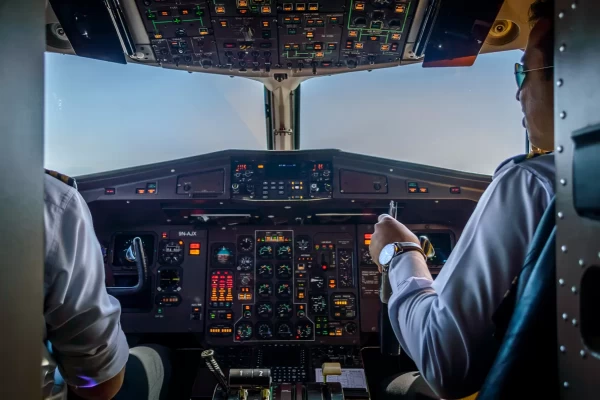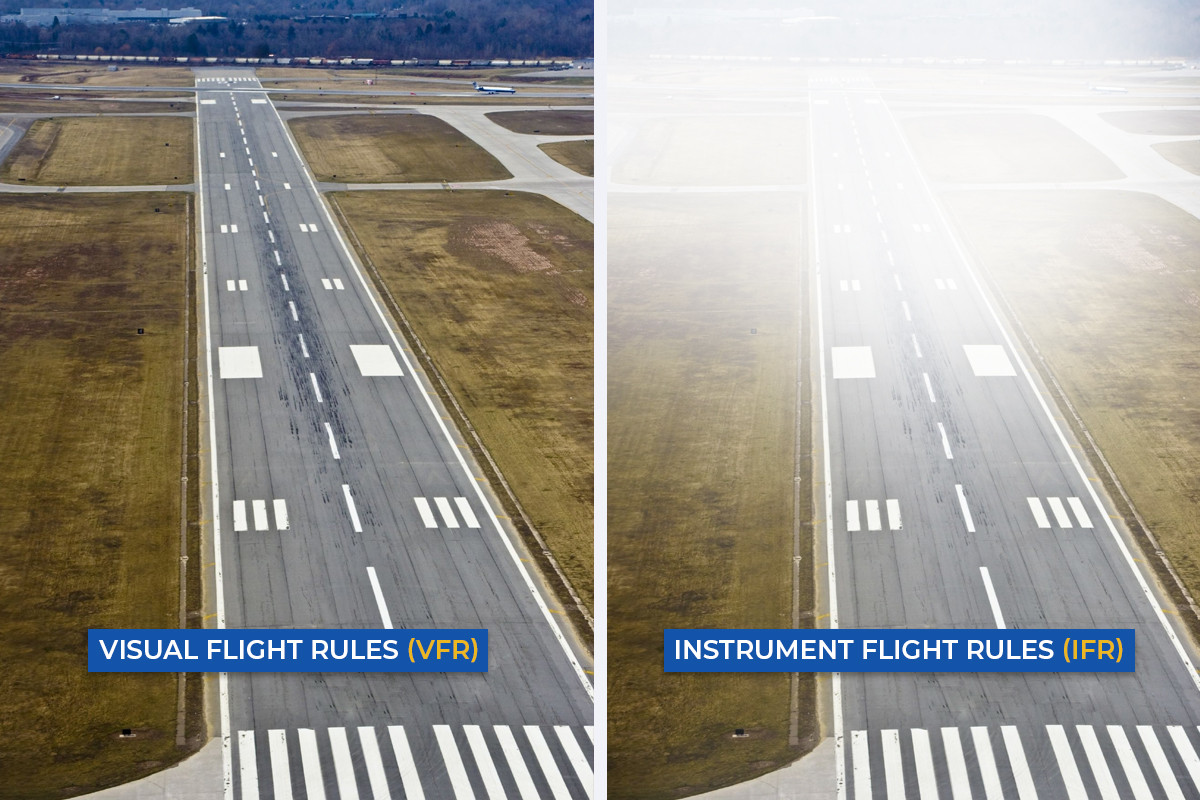The Difference between VFR and IFR Flying Explained

There are two sets of rules for flying any aircraft: VFR and IFR. VFR stands for Visual Flight Rules. IFR stands for Instrument Flight Rules. Depending on the weather conditions a pilot may opt for one set of rules or the other. Mostly, it’s the weather that makes the pilot fly VFR or IFR.
What is the difference between VFR and IFR flying?
VFR normally means “see and avoid”. Under VFR, an aircraft is flown just like driving a car with eye movement and the pilot can see where he is going. VFR pilots maintain a ‘see and avoid’ principle when the visual meteorological conditions (VMC) are favorable. VFR is the usual way to fly a small craft. Under VRF, a pilot, however, cannot fly through clouds, which means they must go under, around, or divert if the clouds form a block en-route.
In Nepal, for example, a IFR pilot can fly on the visibility of just 1,600 meters to 2,200 meters, depending on the aircraft type, says Ram Krishna Bhatta, an air traffic controller at Kathmandu's Tribhuvan International Airport. Visibility is a measure of the distance at which an object or light can be clearly seen.
You may also like: Air Traffic Control (ATC): How It Ensures Safe Skies

In order to fly VFR, Visual Meteorological Conditions have to be maintained. It, basically, means you cannot fly through clouds and need to keep a safe distance. In some types of airspace, you also have to see the ground. As VFR flights rule, pilots are responsible for seeing other aircraft and avoiding a collision.
They have to maintain vertical and horizontal separation. As per the Civil Aviation Authority of Nepal rules, an 8 kilometers horizontal separation is required for a flight under the VFR rules at and above 3,050 meters [10,000 feet] above mean sea level and 5 kilometers below 3,050 meters above mean sea level. There must be no cloud within 1,500 meters [5,000 feet] horizontally or 300 meters [1,000 feet] vertically from the aircraft.
Similarly, an aircraft must maintain an altitude of 300 meters [1,000 feet] over any congested area of a city, town, or settlement. In hills, the aircraft should maintain 600 meters [2,000 feet] altitude from the ground. Flying VFR is beneficial in busy airspace. In Nepal for example, there can be long delays for IFR departures because there are so many requests.
Aviating under IFR
Under IFR rules, a pilot is authorized to fly into clouds in what is called zero visibility. It’s called instrument flight because the pilot navigates only by reference to the instruments in the aircraft cockpit. Unlike VFR flights, IFR happens usually within controlled airspace and requires filing a flight plan, usually, ahead of time. The flying is not completely at the pilot’s discretion. Established waypoints and airways have to be used and the altitude for the flight is determined.
IFR requires a ceiling less than 300 meters [1,000 feet] above ground level and visibility of fewer than three miles. During flight under IFR, there are no visibility requirements, so flying through clouds or other conditions where there is zero visibility outside the aircraft is legal and safe. According to air traffic controller Bhatta, additional time is required for the preparation of the IFR flight plan.
In controlled en-route airspace, the horizontal separation standard between the same types of aircraft flying at the same altitude is 5 minutes. If a smaller aircraft is ahead, for the bigger aircraft, the horizontal separation standard should be 10 minutes. And if a bigger aircraft is ahead to land, for smaller aircraft, the horizontal separation standard should be 2 minutes. Therefore, for smaller planes, which are normally flown on VFR condition, flights are delayed sometimes if the weather deteriorates to prepare for IFR flight.
